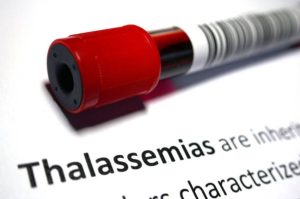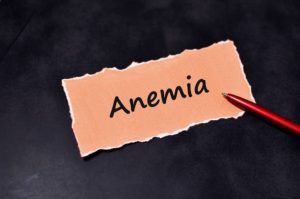Thalassemia in West Bengal: Discover the causes, symptoms, challenges, and preventive strategies of thalassemia in West Bengal. Explore government interventions, screening efforts, and treatment options to curb the genetic disorder.

Thalassemia, a genetic blood disorder marked by the reduced production of hemoglobin, poses a significant public health challenge in India—particularly in West Bengal. With an estimated 10% of the state’s population being carriers, the need for awareness, timely diagnosis, and robust healthcare interventions is more urgent than ever. This article delves into the prevalence, medical and societal implications, current treatment facilities, and ongoing prevention strategies surrounding thalassemia in West Bengal.
Understanding Thalassemia: A Genetic Overview
Thalassemia is inherited in an autosomal recessive manner, which means a child needs to inherit the defective gene from both parents to develop the disease. It primarily affects hemoglobin—the protein in red blood cells responsible for oxygen transport. The two most common types are alpha and beta thalassemia, with beta being more prevalent in India. Patients with thalassemia major often require lifelong blood transfusions and iron chelation therapy.


Thalassemia in West Bengal: Prevalence and Statistics
West Bengal is one of the Indian states with a notably high thalassemia carrier rate, especially among certain ethnic groups like the Rajbanshis, tribal communities, and Bengali Muslims. According to recent estimates, over 7,000 children in West Bengal are affected by thalassemia major, with hundreds of new cases diagnosed each year. Districts like Malda, Murshidabad, and North 24 Parganas report higher incidence rates due to lack of awareness and insufficient genetic screening.
Medical Challenges Faced by Thalassemia Patients in West Bengal
Patients in West Bengal face numerous challenges, from diagnosis delays to inconsistent transfusion support. While major government hospitals in Kolkata—such as NRS Medical College and SSKM Hospital—offer dedicated thalassemia units, rural areas often lack proper infrastructure. Blood shortages, irregular supply of iron chelators, and poor monitoring exacerbate the risk of complications like organ damage and cardiac issues. Additionally, thalassemia patients often suffer from social stigma, impacting their education and employment prospects.
Existing Healthcare Infrastructure and Treatment Facilities
West Bengal’s healthcare infrastructure includes several district-level hospitals equipped for transfusion services, but only a few centers provide comprehensive thalassemia care. The state government runs the “Thalassemia Control Programme” which aims to provide free blood transfusions and subsidized medicines. In Kolkata, private organizations and NGOs like the Thalassemia Society of India play a vital role in bridging service gaps by running support centers, conducting camps, and offering psychosocial counseling.
Screening and Prevention Efforts
Recognizing the importance of early detection, West Bengal has introduced thalassemia screening in antenatal clinics and schools. Couples registering for marriage under certain government schemes are also encouraged to undergo testing. However, these initiatives are often limited to urban centers. Experts emphasize the need for universal premarital and antenatal screening, especially in high-risk districts. Portable hemoglobin electrophoresis machines and trained genetic counselors could significantly boost screening efficiency.
Challenges in Implementation
Despite policy frameworks and healthcare mandates, practical barriers hinder effective implementation. These include insufficient manpower, lack of specialized training among healthcare workers, inconsistent supply chains for medicines and testing kits, and limited public understanding of genetic disorders. The absence of a centralized patient registry complicates data-driven policy interventions, and many rural families still rely on unscientific beliefs or delayed traditional treatments.
Government and NGO Interventions
The Government of West Bengal has launched several initiatives, including the “Swasthya Sathi” scheme for healthcare coverage, which also benefits thalassemia patients. District hospitals have been instructed to maintain adequate blood stocks and establish genetic counseling units. NGOs like the Indian Red Cross Society and Thalassemics India collaborate with schools and community centers for awareness drives and screening camps. Yet, coordination among stakeholders remains a work in progress.
Public Awareness Campaigns
Public awareness remains one of the most potent tools for thalassemia prevention. Over the past decade, campaigns in West Bengal have made strides in urban and semi-urban areas. Government-run health fairs, such as the Swasthya Mela, often feature free thalassemia screening booths. Posters, radio jingles, and television messages promoting voluntary blood donation and carrier testing are common during World Thalassemia Day on May 8.
However, the reach in rural Bengal is still insufficient. Many campaigns lack linguistic and cultural customization, making them less effective among tribal communities and non-Bengali speakers in districts like Darjeeling and Jalpaiguri. The use of community health workers (ASHA workers) to educate families has shown promise, but consistent training and incentives are needed.
Collaborations with local religious and community leaders have helped reduce social stigma. In some areas, NGOs conduct thalassemia awareness drives during Durga Puja and other festivals, capitalizing on mass gatherings to maximize outreach.
Role of Educational Institutions
Educational institutions have begun to play a proactive role in thalassemia control in West Bengal. Some universities, including the University of Calcutta and Jadavpur University, have initiated mandatory thalassemia screening for students before graduation. This step helps identify carriers early and educates future generations about genetic risks.
In schools, particularly in Kolkata and Howrah, NGOs often conduct awareness workshops for senior students and teachers, focusing on basic genetics, blood disorders, and social responsibility. However, state curriculum integration of thalassemia education is still lacking. Experts recommend that Class IX or X biology lessons in the West Bengal Board of Secondary Education (WBBSE) include a dedicated section on thalassemia and hereditary diseases.
Some private schools also conduct voluntary blood donation and screening camps, creating a sense of civic engagement. But these initiatives are mostly confined to urban centers and elite institutions.
Future Outlook
The future of thalassemia prevention and treatment in West Bengal hinges on policy reforms, public-private collaboration, and community-level action. A clear roadmap with district-wise burden estimation, centralized patient registries, and integrated genetic counseling services is urgently needed.
Adopting a “screen before 18” policy—where every adolescent undergoes voluntary screening—could significantly reduce thalassemia births in the next generation. Additionally, a state-supported carrier couple registry and incentivized premarital screening system, like that of Iran or Cyprus, can act as game-changers.
On the treatment front, investment in decentralized transfusion hubs, mobile blood units, and subsidized iron chelators can improve quality of life for existing patients. Encouraging bone marrow donation and cord blood banking also holds promise in expanding curative options.
As genetic research advances, the development of gene-editing technologies like CRISPR for thalassemia may soon become viable. However, ethical regulation and affordability will remain key concerns in ensuring equitable access across all strata of society in West Bengal.
Conclusion
Thalassemia, once considered a marginal health concern, has now emerged as a public health challenge with genetic, economic, and social dimensions in West Bengal. With an estimated carrier population of over 10%, and hundreds of new thalassemia major births each year, the urgency to act is undeniable.
While government policies and NGO efforts have created a foundation, much more is required—especially in the realms of early diagnosis, equitable treatment access, and mass awareness. The state stands at a crossroads where scientific knowledge must meet political will and community participation to prevent future generations from bearing the burden of this preventable disorder.
A comprehensive approach involving universal screening, genetic counseling, decentralized care, and sustained education will be essential to bring thalassemia under control in West Bengal—and to uphold the right to health and dignity for every child born in the state.
Government Resources on Thalassemia
-
National Health Mission (NHM) – Guidelines on Hemoglobinopathies
This document outlines the national strategy for managing hemoglobinopathies, including thalassemia, and provides guidelines on prevention, screening, and management.
National Health Mission – Hemoglobinopathies Guidelines -
West Bengal Health & Family Welfare Department
The department provides updates and resources regarding health programs for blood disorders like thalassemia in West Bengal.
West Bengal Health & Family Welfare Department -
Ministry of Health and Family Welfare – Thalassemia Control Program
This government initiative works to prevent and control thalassemia through genetic counseling, screening, and awareness.
Ministry of Health and Family Welfare – Thalassemia -
Central Government’s Health and Family Welfare – National Health Policy
This policy includes initiatives for improving public health and tackling genetic disorders like thalassemia.
National Health Policy 2017 -
Directorate General of Health Services – Prevention and Control of Thalassemia
A government-led program aimed at reducing the burden of genetic blood disorders, including thalassemia.
DGHS – Prevention and Control of Thalassemia
Also read: Home | Channel 6 Network – Latest News, Breaking Updates: Politics, Business, Tech & More

